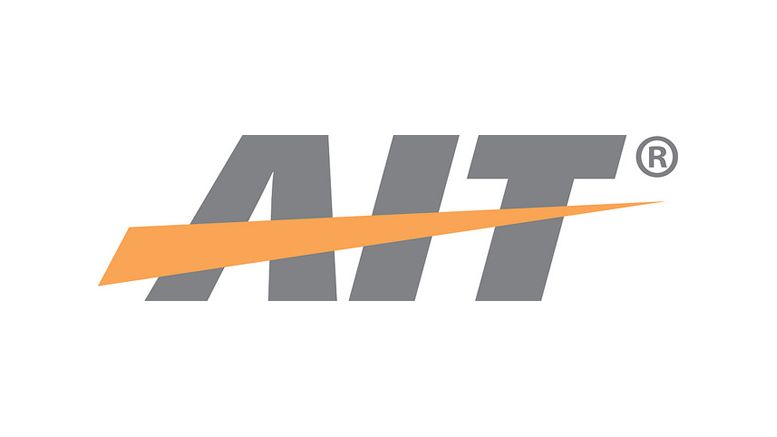
The Biggest White-Collar Crime of All: Money Laundering
Every crime leaves a trace of itself, per Susan Deehan, Chairwoman and CEO of Actionable Intelligence Technologies, the nation’s leading supplier of solutions for financial investigations. In a crime committed for illegal profit, the trace is the proceeds of the crime. To solve a financial crime, law enforcement has to follow the money.
By the same logic, says Deehan, whatever the crime itself may be—drug or weapons trafficking, bribery, embezzlement, insider trading, fraud, or any of a long list of other offenses—the first goal of the criminal is always the same: to prevent the money from being found.
“But the thing is,” she says,
“they can’t really hide it. People don’t bury truckloads of cash in their back yard. They put it in a bank or some other financial institution, which means there’s a record of the deposit. Instead of literally hiding it, they try to hide where it came from. This process is what’s known as money laundering.”
No one knows how much money laundering takes place; it is an illegal activity carried out by criminals that happens outside the normal range of economic and financial statistics. A few years ago, however, the United Nations Office on Drugs and Crime conducted a study to determine the magnitude of illicit funds generated by drug trafficking and organized crime and to investigate to what extent these funds are laundered.
The report estimates that in 2009, criminal proceeds amounted to 3.6% of global GDP, three quarters of which—$1.6 trillion—was laundered.1
This jibes with an estimate by the FBI and the American Association of Fraud Examiners that white-collar crime in the U.S. amounts to between $300 billion and $600 billion a year, far more than total losses from all crimes against property, including burglary and bank robbery.2
In addition to being a crime, money laundering is, as Deehan notes, a clue. For example, in his role as one of the investigators or Silk Road, a recently closed black Internet market that dealt in illegal drugs, a U.S. Secret Service agent named Shaun Bridges stole 20,000 Bitcoins (the currency in which Silk Road transactions were conducted) by altering passwords and transferring them from Silk Road accounts to an account he controlled.
After moving the Bitcoins through an intermediate account, he changed them into U.S. currency. He then transferred the resulting total—$820,000—into his own bank account, where it attracted the attention of the Internal Revenue Service. Bridges was arrested, indicted, and pled guilty; he is due to be sentenced in December.3
More typical, unfortunately, are the unknown but large number of cases that are either never detected or whose investigation is abandoned before definitive proof of a crime can be discovered. By their nature, money laundering cases tend to be very complex; they revolve around schemes perpetrated by trained and inventive financial professionals determined to obscure the source of the original illicit funds.
As a business reporter in the New York Times recently observed,
“Recent cases highlight just how difficult it is for the government to police the tidal waves of cash that wash through the banking system. The effort to combat money laundering is never-ending because criminals always seek new ways to move the proceeds of crime. It is a battle that requires constant vigilance, and is not so much a matter of winning or losing, but of just trying to stay current with the latest tactics.”4
To help strengthen the ability of law enforcement agencies to combat white-collar crime, including money laundering, AIT has developed a tool called the Comprehensive Financial Investigative Solution (CFIS), which allows an investigator to process and analyze financial records exponentially faster and more accurately than would be possible with manual methods.
Says Deehan, “The key to success in money laundering cases, as in all financial investigations, is the ability to leverage advanced technology that allows an investigative group to conduct a comprehensive analysis of all the data in a case in a timely manner. This gives the agency the ability to successfully win cases that would otherwise either be greatly curtailed, discontinued or defeated at trial.”
Investigators using CFIS technology, she says, can perform data entry and analysis in hours and days that would take months and years using conventional methods. The automatic analysis performed by the CFIS system immediately displays source and application of funds, allowing investigators to identify and follow money that would normally long since have been laundered.
About Actionable Intelligence Technologies
Headquartered in Dulles, VA, award-winning Actionable Intelligence Technologies is the nation’s leading supplier of solutions for financial investigations. AIT’s customers include the New York Attorney General’s Office, United States Attorney’s Office, the Criminal Division of the Internal Revenue Service, the United States Postal Inspection Service, Department of Securities, Securities and Exchange Commission, Federal Trade Commission, and other important state agencies, as well as the Miami Dade Police Department, United States Department of Agriculture, numerous commercial and international forensic accounting firms and many others. Founded in 1998 by Susan M. Deehan and Tim Deehan, AIT is dedicated to helping financial investigators make our country a safer place to live. AIT’s mission is to fight against financial crime by delivering the technology and expert knowledge to detect, investigate, and permanently dismantle the criminal organization. References available on request.
For more information, visit http://aitcfis.com/
1. “Frequently Asked Questions,” Financial Action Task Force.
fatf-gafi.org/pages/faq/moneylaundering/
2. Stewart, Emily, “White-Collar Crime Costs Between $400 To $600 Billion A Year,” ValueWalk, July 9, 2015.
valuewalk.com/2015/07/white-collar-crime-stats/
3. Spaven, Emily, “US Silk Road Agent Pleads Guilty to Money Laundering,” coindesk.com, September 1, 2015
coindesk.com/us-silk-road-agent-pleads-guilty-to-money-laundering/
4. Henning, Peter J., “The Challenges of Fighting Money Laundering,” New York Times, August 3, 2015. nytimes.com/2015/08/04/business/dealbook/the-challenges-of-fighting-money-laundering.html?_r=1
Related News





